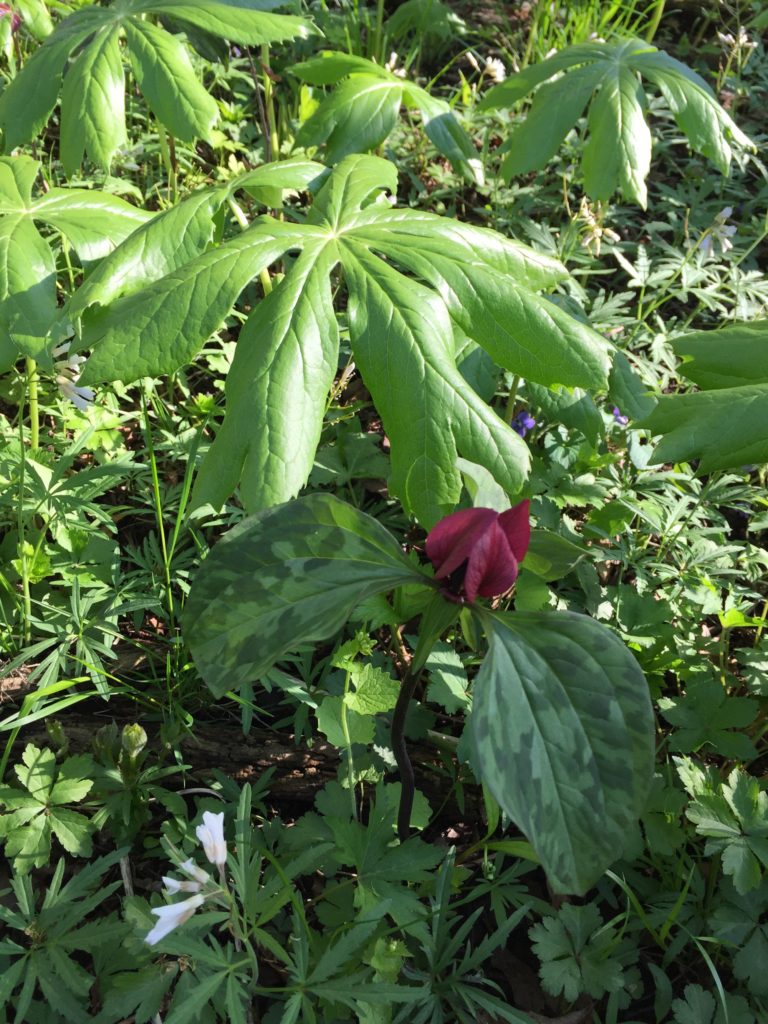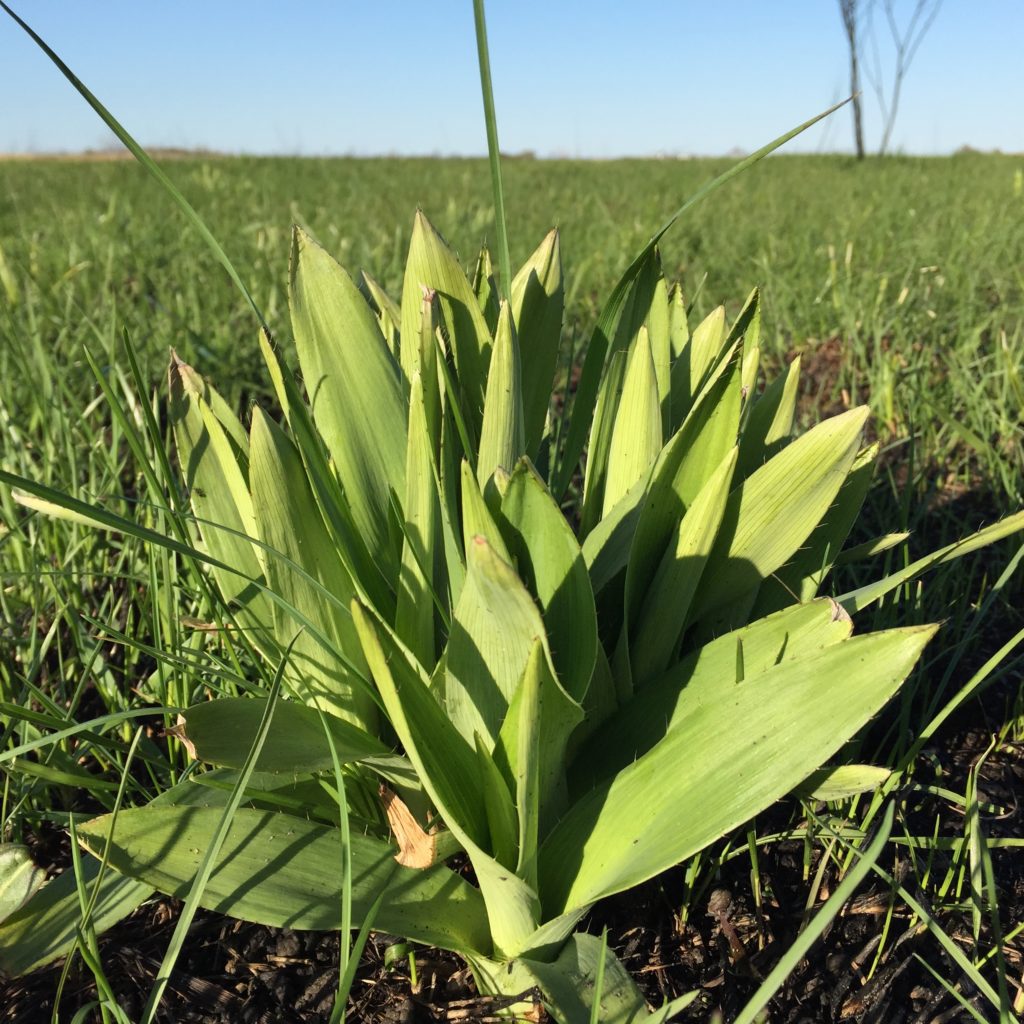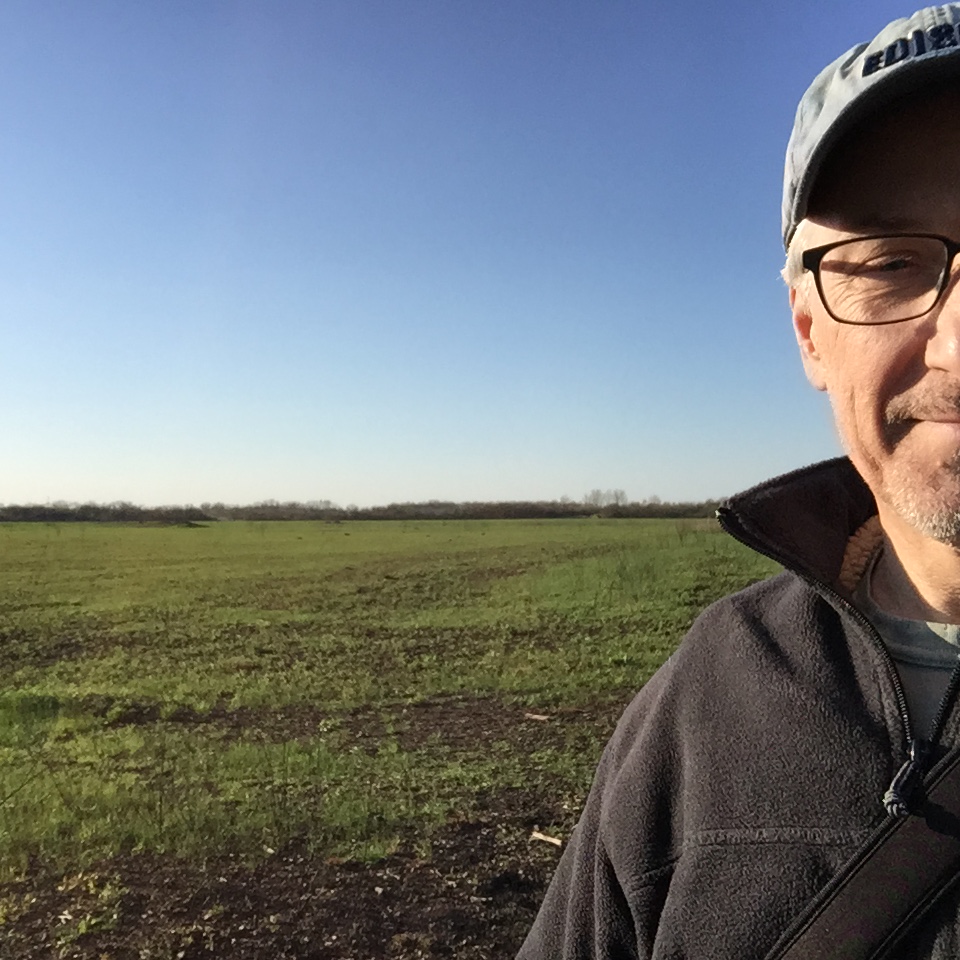It seemed like forever since I’d been out to Midewin. How thrilling it was to be back among so many good friends, themselves absent (or slumbering or merely unseen) for so long.

Where to begin? Let’s start with spring ephemerals since, as their name implies, they are with us but a very short time. Each spring, I make a beeline to Prairie Creek Woods, a remnant oak woodland alongside its namesake creek. The more restoration, the more woodland wildflowers. Spring beauties, smooth yellow violets, common phlox, wake robin and May apples to name a few.

But there is a secret place in the woods, beside the creek, to which I return like a faithful lover. Waiting for me there is a cloistered stand of bluebells. Just for me. And every year, I return their love by searching among the blossoms for sprigs of garlic mustard and yank them out, to ensure the bluebells do not become overrun with this highly invasive weed; to ensure that bluebells return healthy each and every spring.

To ensure that the recovering prairie returns each and every spring, the US Forest Service’s Hot Shot Team conducts controlled burns. This year was a record setter for the number of acres cleared by fire, returning vital nutrients to the soil. Man, I do loves me some reemergent prairie vegetation following a burn. Nothing makes me so happy as to spy intensely spring green shoots rising up out of the rich, blackened soils.

The cleansing nature of fire reveals, too, some hidden secrets. Cleared of vegetation, the foundations of old farm buildings, shards of pottery and glass, homestead walls comprised of glacial erratics cleared from the surrounding fields, are stark reminders of Midewin’s agricultural past, when pioneer farmers first cleared the land of its prairie vegetation.
And, of course, the birds. My lovely birds. Blue-winged teals and hooded mergansers. Kildeers and snipes. White-throated sparrows and the first palm warbler of the season. Blue-grey gnat catchers and red-headed woodpeckers. Forty species in all. Apologies for the lack of bird pictures – sometimes I need to leave the camera at home and just relish them through the binocs. But I did manage to snap a cellphone pic of the sandhill crane.

It’s no accident, of course, that the name of my blog is A Midewin Almanac, an homage to Leopold’s A Sand County Almanac. And for me the sight and sound of that crane crystalizes that connection. It calls instantly to mind a passage from his Marshland Elegy: “When we hear [the crane’s] call we hear no mere bird. We hear the trumpet in the orchestra of evolution. He is the symbol of our unatamable past, of that incredible sweep of millennia which underlies and conditions the daily affairs of birds and men. Their annual return is the ticking of the geological clock. Upon the place of their return they confer a peculiar distinction. Amid the endless mediocrity of the commonplace, a crane marsh holds a paleontological patent of nobility, won in the march of aeons, and revocable only by shotgun.”
Midewin is – for cranes, for all prairie plants and creatures, for me – a safe harbor. A sanctuary in every sense of the word. It is, in short, home.